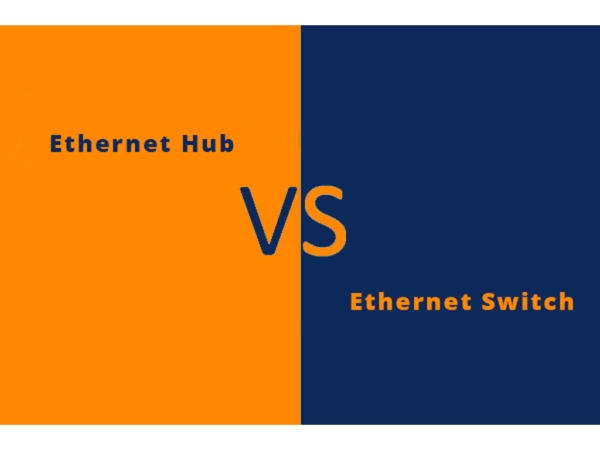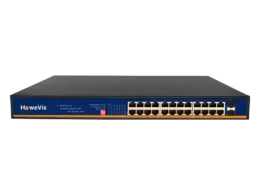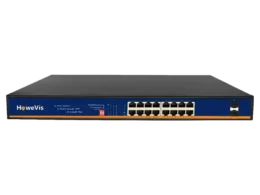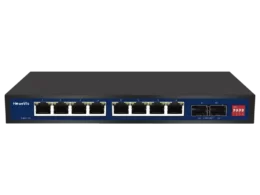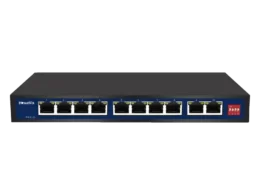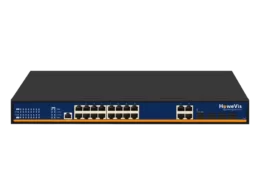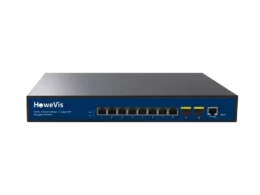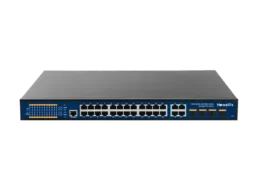Hubs, switches, and routers are the bridges that connect computers, network devices, and other networks. In data networks, Ethernet hubs, routers, and switches are all used. Through their different roles, you can use them together in the same package.
But, this will confuse some people about whether they are the same thing or not. To ensure that these devices are functioning entirely and efficiently, it is essential to know what they are and how to use them.
Although hubs and switches both connect computers in a network. The switches are more expensive, and a network built with switches is usually faster than one made with hubs.
Ethernet Hub
Hubs are networking devices that send signals to all ports (except one). Hubs offer each system its physical connection. It also reduces the chances that a single computer’s error would result in the loss of reference for all computers. Since a hub is still a device with shared access, connectivity is only half-duplex. The physical layer runs the Hub. Another name for Hub is a gateway.
All data received on one connection is moved through all other connections via Ethernet hubs. This doesn’t have to have the same level of intelligence as the other Ethernet products. As a result, a hub is often used as a critical link point for data network devices.
Hub connects LAN’s segments. When a data packet comes on an Ethernet hub, it is first copied and then passed to the other ports so that all parts of the local area network, or LAN, can see all the data packets.
When using a hub, it sends data packets to all its ports, regardless of their final destination. The Ethernet hub can’t find out the destination port. It ensures that it will arrive at its intended destination by going through every port.
This method of data management is easy and efficient. However, it generates a lot of traffic on the network because of various incomplete information in each port.
As a result, it can cause slow network response times. However, this is not an issue for most small data networks, particularly those used in homes or small offices.
Types of Ethernet Hub:
Hub has two types:
Active Hub: An active hub is a hub that has its own power supply. Along with the network, it will clean, boost, and transmit the signal. It acts as both a transmitter and a wiring hub. Active Hubs can also be used to connect two or more nodes.
Passive Hub: This Hub receives power from the active Hub as well as wiring from the poles. Signals move through a network by passive hubs without being cleaned or boosted. It is not possible to use it to increase the distance between nodes.
Advantages:
Some of the advantages or benefits of Hubs are:
It can increase the network’s total distance by having little impact on its performance.
It is less costly.
It can connect multiple media forms.
Disadvantages:
The following are some disadvantages of Hub:
It lacks mechanisms such as packet error correction and object tracking.
It is not able to work in complete duplex mode. It’s only able for half-duplex mode. In short, half-duplex mode transmits data in a one-way direction. As a result, the Hub must change modes daily.
It is unable to support many management systems such as transmission media and Ethernet, etc.
Hub is unable to support large systems such as a token ring. This is because hubs often share data with all of the network’s computers. The network would become slower and more unstable because of network traffic.
It is unable to filter information, so it sends data to all linked segments.
It avoids a method to reduce internet usage.
Ethernet Switch:
A switch is a network device that enables the establishment and termination of connections depending on the need. The data link layer is used to control the switch. It is required to filter packets in this situation. It’s a full-duplex transmission mode that’s also known as an effective bridge.
Switches are essential for transferring data from one computer to the next. Switches, in general, perform better hubs by providing dedicated bandwidth to each end device.
Switches are semi-intelligent machines. They can detect different devices connected to it. A hub is less complicated than an Ethernet switch.
It filters and forwards data packets between LAN segments or local area networks. The switch can use the Port numbers of the devices attached to an Ethernet network to control it.
It can recognize the computers or other units on each of its ports using this information. It allows it to transfer data packets to the correct ports and, as a result, to accurate devices without overloading the network.
Moreover, an Ethernet switch may assign a broadband connection to each of its ports. It shows that people would still have access to the whole network bandwidth based on the number of devices in use. For these purposes, an Ethernet switch is preferable to a hub for a data network.
Ethernet switches are available in both managed and unmanaged settings. The most popular network switches are unmanaged network switches. These network devices enable the system to remain connected without any extra setup. Managed switches need a structure that allows traffic to focus on improvement.
Types of Ethernet Switches:
Switches also have two types:
Manageable Switch: A control port and an IP address can be placed and configured on a manageable switch.
Unmanageable Switches: Control is not possible on an unmanageable switch. There is no way to assign an IP address because there is no terminal port.
Advantages:
Some of the following are the benefits of using Ethernet switches.
They increase the network’s available bandwidth.
They help in lessening the workload on individual host Desktop computers. They also are increasing network performance.
They improve the reputation of an organization.
Frame clashes are less common in networks that use switches.
Switches build a network layer for each link, which explains why.
Workstations are most of the time directly connected to switches.
Disadvantages:
Following are some disadvantages of switch:
In comparison to network bridges, they are more costly.
It’s challenging to discover network connectivity issues through the network switch.
Broadcast traffic can be uncomfortable.
Qualitative evaluation and setup are required to handle Ethernet packets.
Switch ports can be dangerous because they can send false IP addresses or steal TCP protocol.
Dealing with Ethernet packets requires proper planning and preparation.
They are not as effective as routers at reducing transmissions.
Here at Howevision.com, we have every kind of Hub and Switches and all Ethernet devices. To know which device is more suitable, let’s discuss the main difference between both devices.
